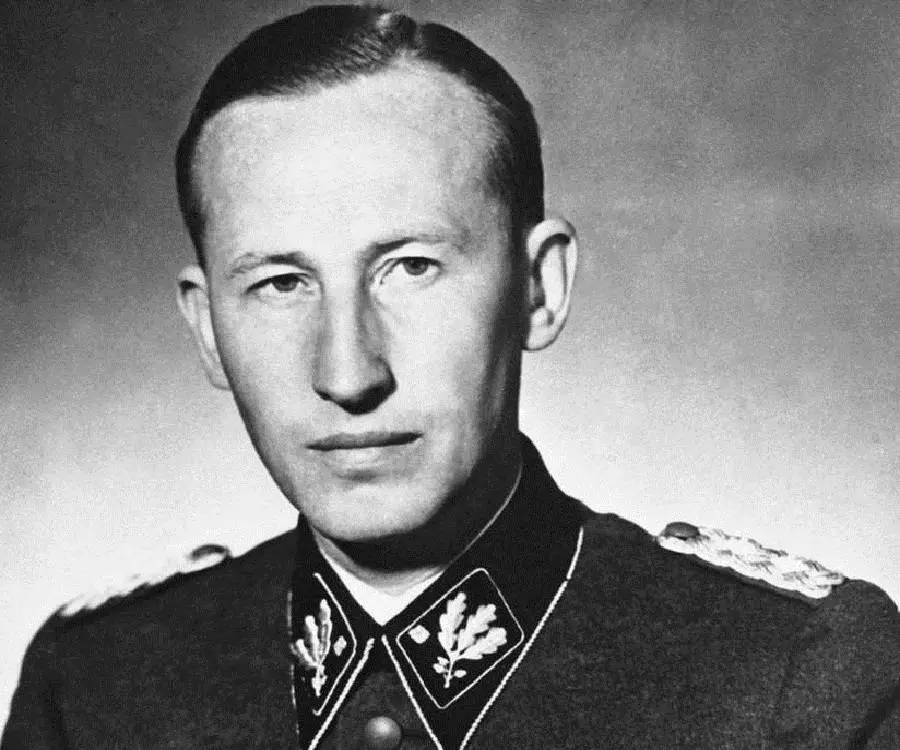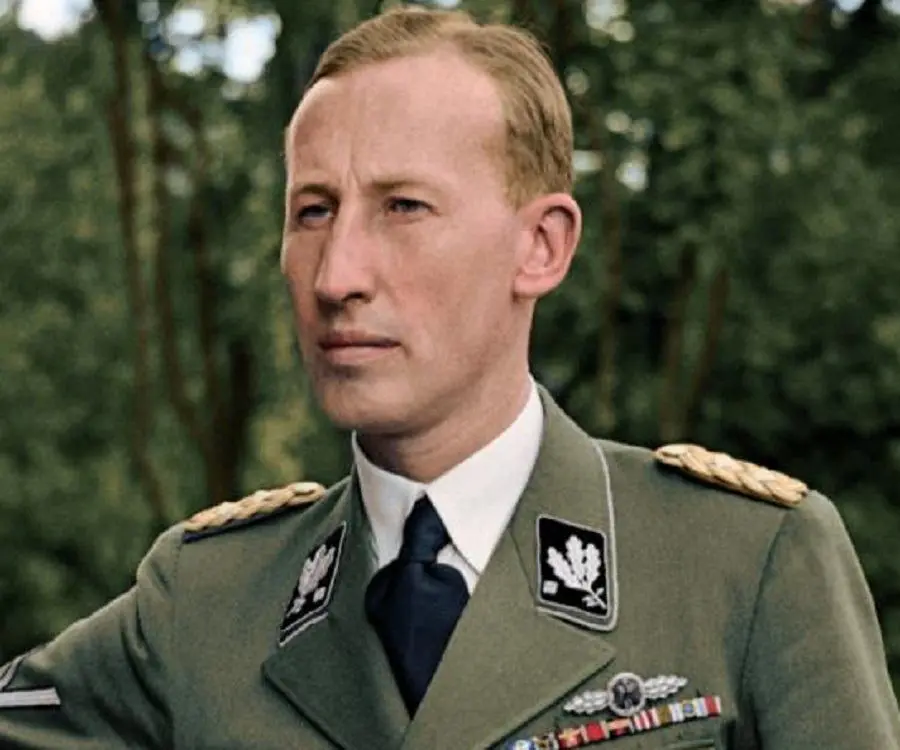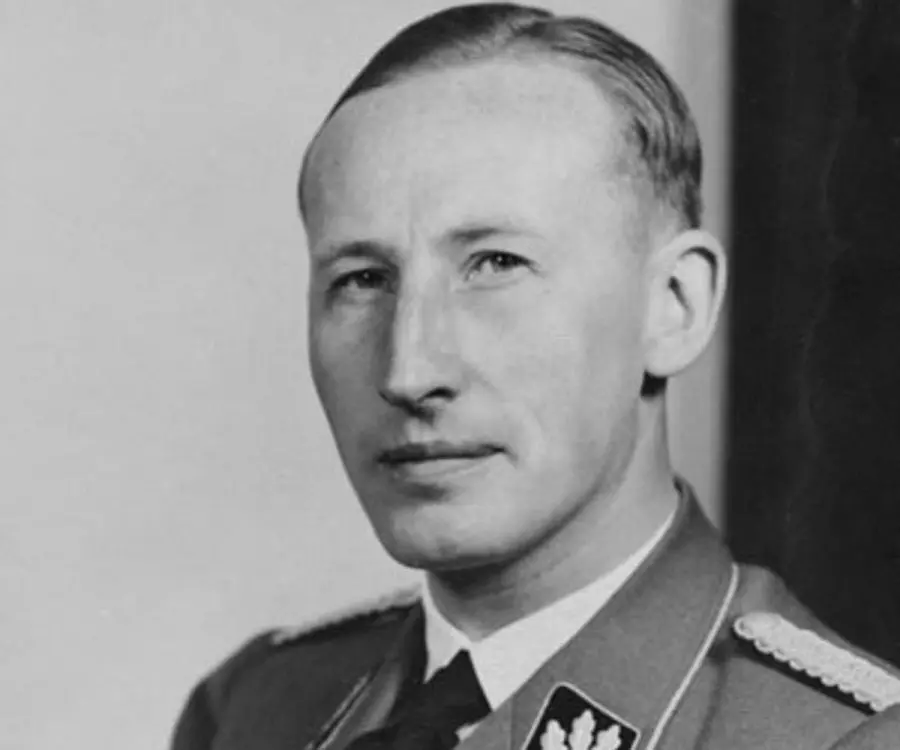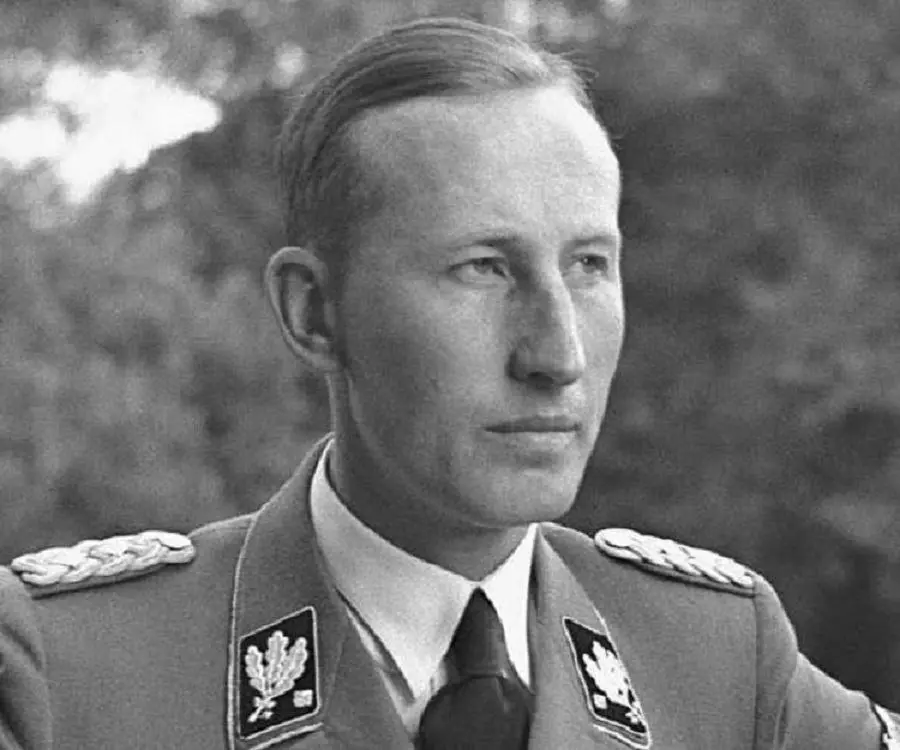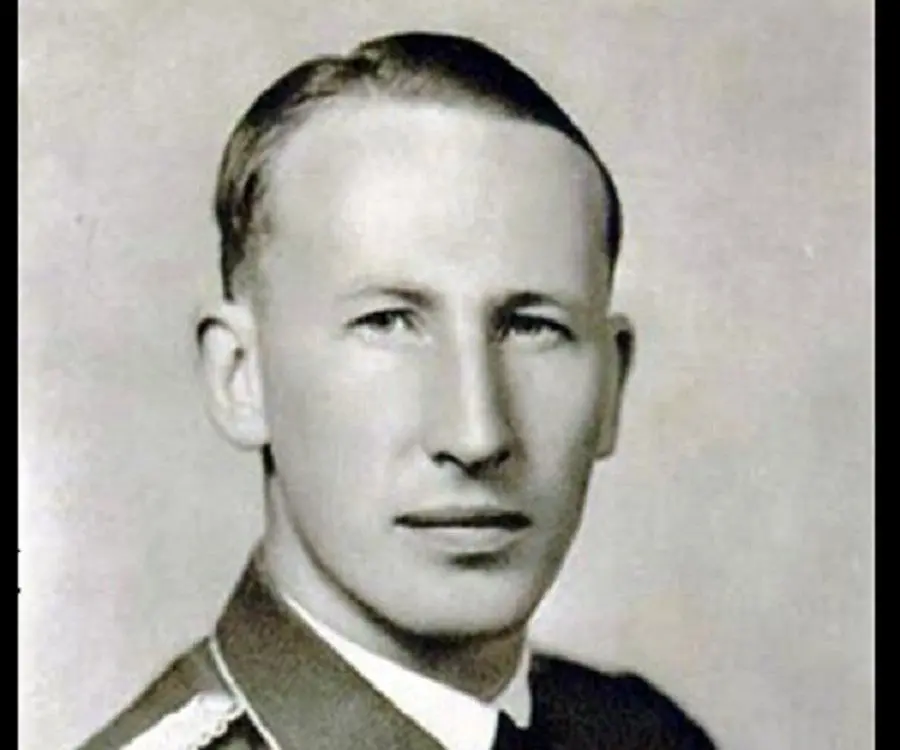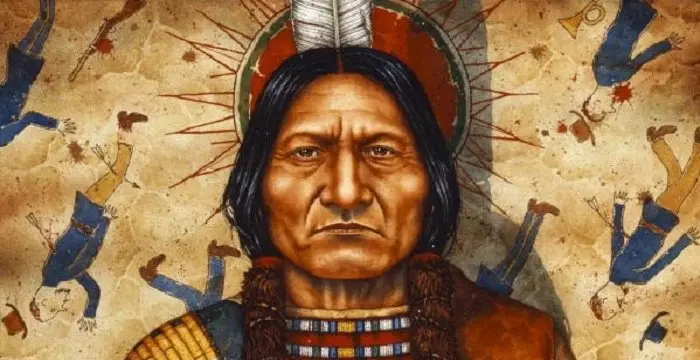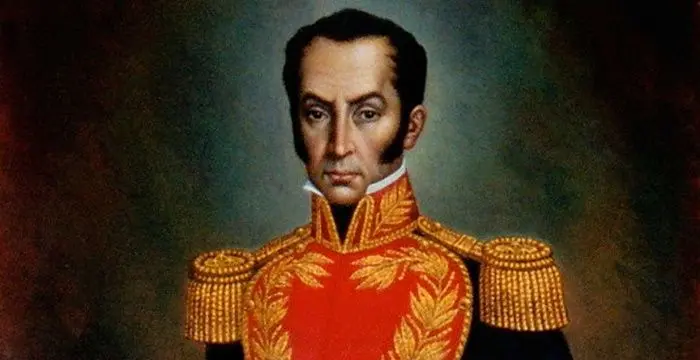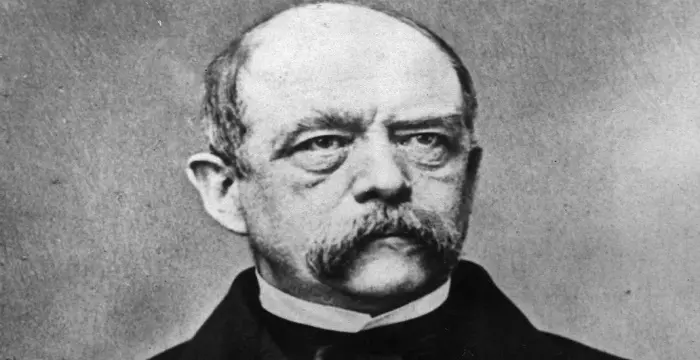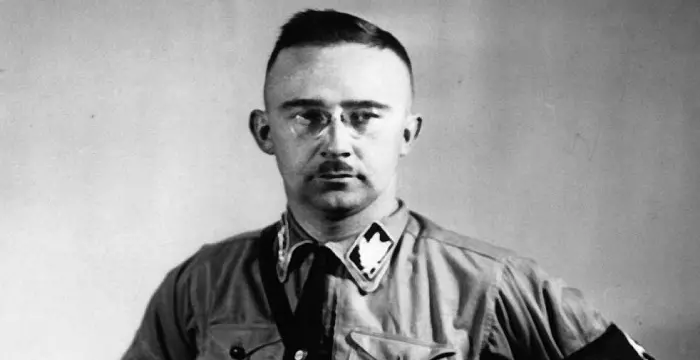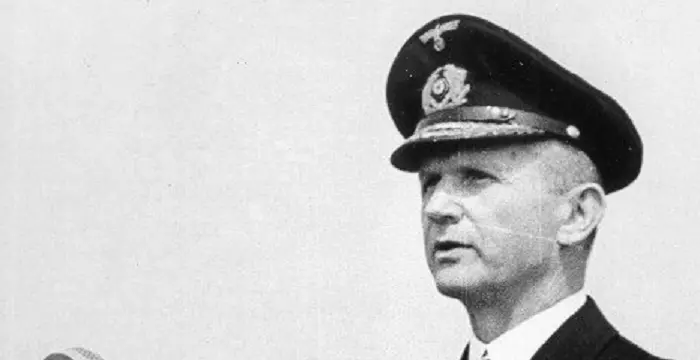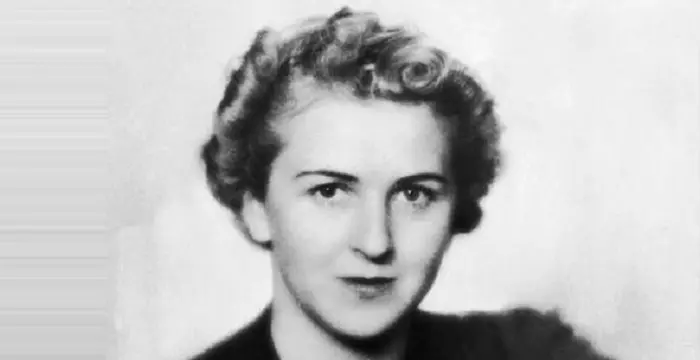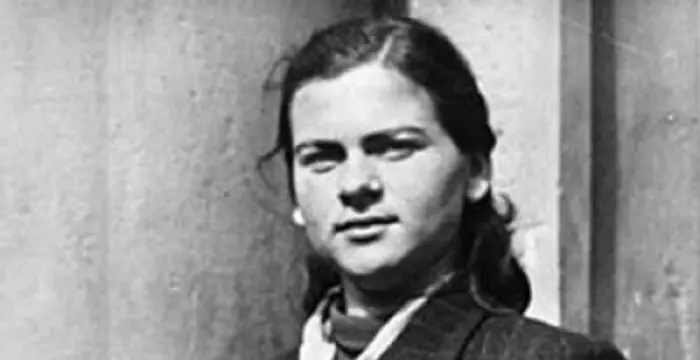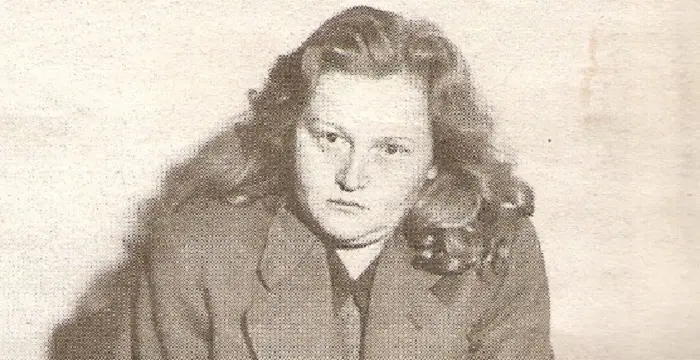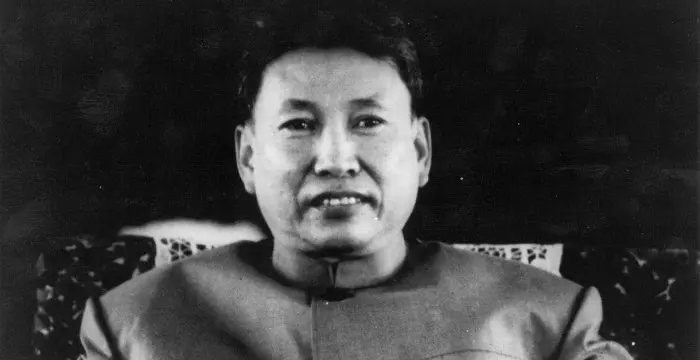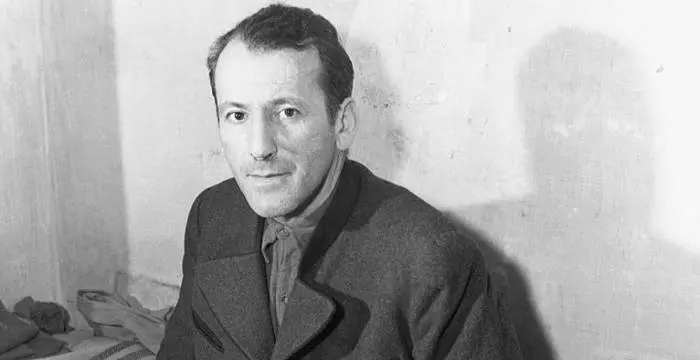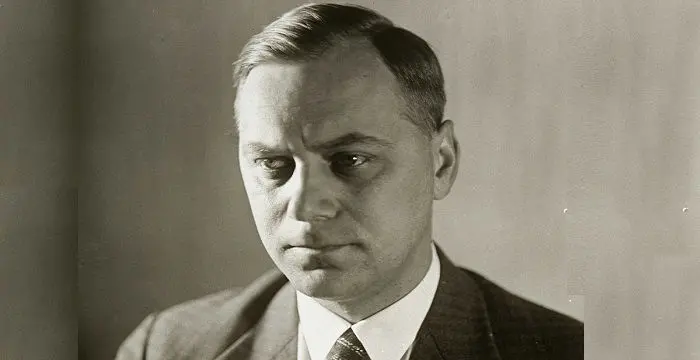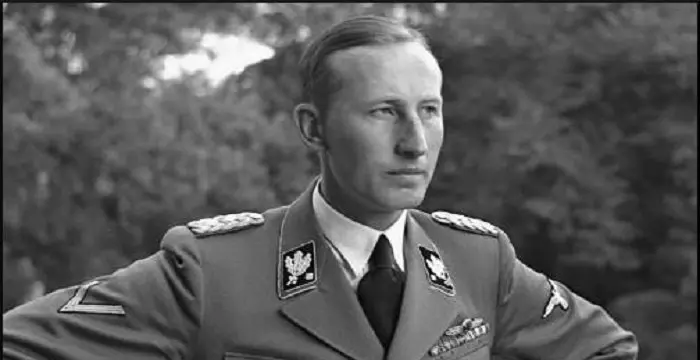
Reinhard Heydrich - Nazi Official, Birthday and Family
Reinhard Heydrich's Personal Details
Reinhard Heydrich was a high-ranking German Nazi official during the World War II
| Information | Detail |
|---|---|
| Birthday | March 7, 1904 |
| Died on | June 4, 1942 |
| Nationality | German |
| Famous | Nazis, War Criminals, Leaders, Military Leaders, Soldiers, Nazi Official |
| Ideologies | Nazis |
| Spouses | Lina Heydrich |
| Siblings | Heinz Heydrich, Q15303817 |
| Known as | Reinhard Tristan Eugen Heydrich |
| Childrens | Heider Heydrich, Klaus Heydrich, Marte Heydrich, Silke Heydrich |
| Universities |
|
| Founder / Co-Founder |
|
| Birth Place | Halle |
| Religion | Modern paganism, Catholicism |
| Height | 191 |
| Gender | Male |
| Father | Richard Bruno Heydrich |
| Mother | Elisabeth Krantz |
| Sun Sign | Pisces |
| Born in | Halle |
| Famous as | Nazi Official |
| Died at Age | 38 |
Reinhard Heydrich's photo
Who is Reinhard Heydrich?
Reinhard Heydrich was a high-ranking German Nazi official during the World War II. He played a major role in planning the Holocaust and many historians consider him one of the darkest and most fearsome men within the Nazi Party. Hitler described him as "the man with the iron heart". While the Nazis called him ‘The Blond Beast’, others referred to him as the ‘Hangman Heydrich’. He was ambitious for power and was a manipulator. He led Hitler's Final Solution in which the almost entire Jewish population of Europe was exterminated. The founding head of the Sicherheitsdienst (SD), he also served as the chief of the Reich Security Main Office, and the police agency. He converted the Gestapo into an instrument of terror. He convened the Wannsee Conference, where he presented the plans to coordinate a European-wide ‘Final Solution’ of the Jewish extermination. The British Special Operations Executive plotted to kill him in Prague, where he was the Deputy Reich Protector of Bohemia and Moravia. In the top-secret ‘Operation Anthropoid’, a team of Czech and Slovak soldiers critically wounded him in an ambush. He died from his injuries. After his funeral in Berlin, Hitler ordered retaliatory measures against the Czech population.
// Famous Military Leaders
Sitting Bull
Sitting Bull was a Teton Dakota Indian chief who led Sioux tribes in their struggle for survival on the North American Great Plains.
Simon Bolivar
Simón Bolívar was a Venezuelan military leader who was instrumental in independence of several Latin American countries from the Spanish rule. This biography profiles his childhood, life, achievements and timeline.
Otto von Bismarck
Otto von Bismarck served as the Chancellor of Germany and the Prime Minister of Prussia. He unified the German states into a powerful German empire. This biography profiles his childhood, political career, life, achievements and timeline.
Childhood & Early Life
Reinhard Tristan Eugen Heydrich was born on March 7, 1904, in Halle an der Saale, to Elisabeth Anna Maria Amalia Heydrich and Richard Bruno Heydrich. His father founded the Halle Conservatory of Music, Theatre, and Teaching, and his mother taught piano there. He had two siblings.
He was named after different people and characters—Reinhard referred to the hero from his father's opera, ‘Amen,’ and Tristan comes from Richard Wagner's ‘Tristan und Isolde.’ Eugen was his maternal grandfather's forename, who was the director of the Dresden Royal Conservatory.
He loved playing the violin, and impressed listeners with his musical talent. He studied in Reformgymnasium, and was good in studies, especially in science. He was a good athlete, and was an expert swimmer. He was shy, and was often bullied for his high-pitched voice.
When Heydrich was 15, his hometown Halle witnessed civil unrest after World War I. He then joined Maercker's Volunteer Rifles, and was a part of the force that protected private property. He then joined the National German Protection and Shelter League, an anti-Semitic organization.
Career
In 1922, Reinhard Heydrich joined the German Navy, and became a naval cadet. In 1924, he was promoted as senior midshipman, and in 1926, he was assigned as a signals officer on a battleship. In 1928, he became sub-lieutenant. However, in 1931, he was dismissed from the navy for breaking an engagement promise to a woman.
In 1931, he was hired in the security service division of the SS. He began his job as chief of the new 'Ic Service', and set up an office at the Nazi Party headquarters in Munich. He created a network of spies to obtain information to be used as blackmail for political gains. In December, he was promoted to the rank of SS-major.
In 1932, his enemies spread the rumor that he had Jewish ancestry. However, after investigation, it was proved that he was of German origin. In the same year, he was appointed chief of the security service, SD.
He turned the intelligence service into an effective machine of terror and intimidation. Heydrich and Himmler, the head of SD, controlled the political police forces of all the German states. In 1933, Heydrich, with his men from SD attacked the police headquarters in Munich, and took it over. Himmler became the Munich police chief, and Heydrich became the commander.
In 1933, Hermann Göring founded the Gestapo, the official secret police of Nazi Germany and German-occupied Europe, and in 1934, Heydrich became the head of this instrument of terror. In the same year, SD became the official Nazi intelligence service.
In 1934, Hitler asked Heydrich and Himmler to develop a dossier on Ernst Röhm, Sturmabteilung (SA) leader, in order to remove him. The SS was then a part of SA. Heydrich and Himmler prepared lists of those whom Hitler wanted to remove, including the top SA officials. In June, mass arrests were made, and Röhm was shot, along with the SA leader. About 200 people were killed in the action. SA was then converted into a sports and training organization.
In 1936, all police forces across Germany were united, and Himmler became the Chief of German Police, and Heydrich became his deputy. The police was reorganized into two groups—Order Police, Orpo, and Security Police, SiPo. Heydrich headed the SiPo and SD.
Heydrich helped organize the 1936 Summer Olympics in Berlin, which was used to promote the propaganda of the Nazi regime. Ambassadors were sent to countries that wanted to boycott the Olympics. Anti-Jewish violence was forbidden for the time being, and ‘Der Stürmer,’ the official Nazi tabloid, was not displayed at newsstands. Heydrich was awarded with German Olympic Games Decoration (First Class) for his contribution in the games' success.
In 1937, he directed the Gestapo to carry out house searches, and make arrests, in an effort to crush public opinion. In 1938, when Austria resisted Hitler's merger efforts with Germany, he pressurized Austria by making propagandas in Vienna, emphasizing that the two countries share the same Germanic blood.
In 1939, SD and SiPo were merged into the new Reich Main Security Office, which was headed by Heydrich. He was given the title of Chief of Security Police and SD. In 1940, he became the president of ICPC, later known as Interpol. He was promoted to General der Polizei in 1941.
In 1941, he and his SD carried out the Night-and-Fog decree, under which people endangering German security were arrested under the cover of night and fog. About 7,000 people disappeared under this decree.
In the same year, he was appointed Deputy Reich Protector of Protectorate of Bohemia and Moravia. His task was to sabotage and suppress anti-German strikes. In Prague, he started his rule by terrorizing the citizens. Over the course of his tenure he became directly responsible for the arrests and deaths of thousands of citizens.
In London, the Czechoslovak government-in-exile made a plan to kill him. Jan Kubiš and Jozef Gabčík headed the team, trained by the British Special Operations Executive. On 27 May 1942, they attacked Heydrich when he was on his way to meet Hitler. He fought with the attackers, but was critically injured. He then went into coma, and died on June 4, 1942. Hitler, however, blamed Heydrich for his own death due to his carelessness. He condemned him as “stupid and idiotic”.
Major War Crimes
Heydrich converted Gestapo into an instrument of fear. It had the authority to arrest any citizen on the suspicion that he might commit a crime, and the definition of crime was set at his discretion. In 1936, the Gestapo Law gave police the right to act extra-legally, which gave them the power to imprison people without judicial proceedings. People were arrested without warrants, sent to concentration camps, or killed.
Due to his reign of terror in Prague, Reinhard Heydrich earned the epithet "the Butcher of Prague." He executed 92 people within three days of his arrival. He closed all avenues by which Czechs expressed their culture. About 5,000 people were arrested, and thousands were sent to concentration camps. In March 1942, he swept all Czech organizations, the military, and the intelligentsia, and practically paralyzed the Czech resistance.
Personal Life & Legacy
In 1930, Reinhard Heydrich met Lina von Osten, a Nazi Party follower, and soon got engaged. They married in December 1931. They had four children—Klaus, Heider, Silke, and Marte.
After Heydrich's death, Lina finally won the right to a pension after a number of court cases in 1956 and 1959. The government had initially declined to pay the pension due to Heydrich's role in the Holocaust.
// Famous Nazis
Heinrich Himmler
Heinrich Himmler was a German Nazi military commander and a close associate of Adolf Hitler. This biography profiles his childhood, family, personal life, role in concentration camps and his death.
Karl Dönitz
Karl Dönitz was a German admiral and played an important role in World War II. This biography profiles his childhood, early life, family, naval career, capture, imprisonment, and other facts.
Eva Braun
Eva Braun was the partner of Hitler and later his wife – only for a few hours. this biography traces the childhood, life and timeline of Eva Braun.
Reinhard Heydrich's awards
| Year | Name | Award |
|---|---|---|
Other | ||
| 0 | German Order | |
| 0 | Golden Party Badge | |
| 0 | Grand Cordon of the Order of the Rising Sun | |
Reinhard Heydrich biography timelines
- // 7th Mar 1904Reinhard Tristan Eugen Heydrich was born on March 7, 1904, in Halle an der Saale, to Elisabeth Anna Maria Amalia Heydrich and Richard Bruno Heydrich. His father founded the Halle Conservatory of Music, Theatre, and Teaching, and his mother taught piano there. He had two siblings.
- // 1922In 1922, Reinhard Heydrich joined the German Navy, and became a naval cadet. In 1924, he was promoted as senior midshipman, and in 1926, he was assigned as a signals officer on a battleship. In 1928, he became sub-lieutenant. However, in 1931, he was dismissed from the navy for breaking an engagement promise to a woman.
- // 1930In 1930, Reinhard Heydrich met Lina von Osten, a Nazi Party follower, and soon got engaged. They married in December 1931. They had four children—Klaus, Heider, Silke, and Marte.
- // 1931In 1931, he was hired in the security service division of the SS. He began his job as chief of the new 'Ic Service', and set up an office at the Nazi Party headquarters in Munich. He created a network of spies to obtain information to be used as blackmail for political gains. In December, he was promoted to the rank of SS-major.
- // 1932In 1932, his enemies spread the rumor that he had Jewish ancestry. However, after investigation, it was proved that he was of German origin. In the same year, he was appointed chief of the security service, SD.
- // 1933He turned the intelligence service into an effective machine of terror and intimidation. Heydrich and Himmler, the head of SD, controlled the political police forces of all the German states. In 1933, Heydrich, with his men from SD attacked the police headquarters in Munich, and took it over. Himmler became the Munich police chief, and Heydrich became the commander.
- // 1933In 1933, Hermann Göring founded the Gestapo, the official secret police of Nazi Germany and German-occupied Europe, and in 1934, Heydrich became the head of this instrument of terror. In the same year, SD became the official Nazi intelligence service.
- // 1934In 1934, Hitler asked Heydrich and Himmler to develop a dossier on Ernst Röhm, Sturmabteilung (SA) leader, in order to remove him. The SS was then a part of SA. Heydrich and Himmler prepared lists of those whom Hitler wanted to remove, including the top SA officials. In June, mass arrests were made, and Röhm was shot, along with the SA leader. About 200 people were killed in the action. SA was then converted into a sports and training organization.
- // 1936In 1936, all police forces across Germany were united, and Himmler became the Chief of German Police, and Heydrich became his deputy. The police was reorganized into two groups—Order Police, Orpo, and Security Police, SiPo. Heydrich headed the SiPo and SD.
- // 1936Heydrich helped organize the 1936 Summer Olympics in Berlin, which was used to promote the propaganda of the Nazi regime. Ambassadors were sent to countries that wanted to boycott the Olympics. Anti-Jewish violence was forbidden for the time being, and ‘Der Stürmer,’ the official Nazi tabloid, was not displayed at newsstands. Heydrich was awarded with German Olympic Games Decoration (First Class) for his contribution in the games' success.
- // 1936Heydrich converted Gestapo into an instrument of fear. It had the authority to arrest any citizen on the suspicion that he might commit a crime, and the definition of crime was set at his discretion. In 1936, the Gestapo Law gave police the right to act extra-legally, which gave them the power to imprison people without judicial proceedings. People were arrested without warrants, sent to concentration camps, or killed.
- // 1937In 1937, he directed the Gestapo to carry out house searches, and make arrests, in an effort to crush public opinion. In 1938, when Austria resisted Hitler's merger efforts with Germany, he pressurized Austria by making propagandas in Vienna, emphasizing that the two countries share the same Germanic blood.
- // 1939In 1939, SD and SiPo were merged into the new Reich Main Security Office, which was headed by Heydrich. He was given the title of Chief of Security Police and SD. In 1940, he became the president of ICPC, later known as Interpol. He was promoted to General der Polizei in 1941.
- // 1941In 1941, he and his SD carried out the Night-and-Fog decree, under which people endangering German security were arrested under the cover of night and fog. About 7,000 people disappeared under this decree.
- // 4th Jun 1942In London, the Czechoslovak government-in-exile made a plan to kill him. Jan Kubiš and Jozef Gabčík headed the team, trained by the British Special Operations Executive. On 27 May 1942, they attacked Heydrich when he was on his way to meet Hitler. He fought with the attackers, but was critically injured. He then went into coma, and died on June 4, 1942. Hitler, however, blamed Heydrich for his own death due to his carelessness. He condemned him as “stupid and idiotic”.
// Famous War Criminals
Irma Grese
Irma Grese was a notorious German Nazi concentration camp guard during the Second World War. This biography profiles her childhood, life, horrifying acts, death and other facts.
Mutsuhiro Watanabe
Mutsuhiro Watanabe was an Imperial Japanese Army corporal in the Second World War. Check out this biography to know about his childhood, family life, achievements and other facts about him.
Ilse Koch
Ilse Koch was the wife of Karl-Otto Koch, the chief of the Nazi concentration camps in Buchenwald and Majdanek. This biography profiles her childhood, life, crimes, and timeline.
Pol Pot
Pol Pot was the Cambodian revolutionary who led the Khmer Rouge. This biography provides a glimpse of his childhood, career, profile and timeline.
Ernst Kaltenbrunner
Ernst Kaltenbrunner was an Austrian Nazi Party leader during World War II. Check out this biography to know about his childhood, life, achievements and other facts about him.
Alfred Rosenberg
Alfred Rosenberg was one of the leading ideologists of the Nazi Party who played a decisive role in shaping Nazi philosophy. This biography of Alfred Rosenberg provides detailed information about his childhood, life, works & timeline.
Reinhard Heydrich's FAQ
What is Reinhard Heydrich birthday?
Reinhard Heydrich was born at 1904-03-07
When was Reinhard Heydrich died?
Reinhard Heydrich was died at 1942-06-04
Where was Reinhard Heydrich died?
Reinhard Heydrich was died in Prague
Which age was Reinhard Heydrich died?
Reinhard Heydrich was died at age 38
Where is Reinhard Heydrich's birth place?
Reinhard Heydrich was born in Halle
What is Reinhard Heydrich nationalities?
Reinhard Heydrich's nationalities is German
What is Reinhard Heydrich ideologies?
Reinhard Heydrich's ideologies is Nazis
Who is Reinhard Heydrich spouses?
Reinhard Heydrich's spouses is Lina Heydrich
Who is Reinhard Heydrich siblings?
Reinhard Heydrich's siblings is Heinz Heydrich, Q15303817
Who is Reinhard Heydrich childrens?
Reinhard Heydrich's childrens is Heider Heydrich, Klaus Heydrich, Marte Heydrich, Silke Heydrich
What was Reinhard Heydrich universities?
Reinhard Heydrich studied at Technical University of Munich
Which company or organization was founded by Reinhard Heydrich?
Reinhard Heydrich was the founder/co-founder of Einsatzgruppen, Einsatzkommando
What is Reinhard Heydrich's religion?
Reinhard Heydrich's religion is Modern paganism, Catholicism
How tall is Reinhard Heydrich?
Reinhard Heydrich's height is 191
Who is Reinhard Heydrich's father?
Reinhard Heydrich's father is Richard Bruno Heydrich
Who is Reinhard Heydrich's mother?
Reinhard Heydrich's mother is Elisabeth Krantz
What is Reinhard Heydrich's sun sign?
Reinhard Heydrich is Pisces
How famous is Reinhard Heydrich?
Reinhard Heydrich is famouse as Nazi Official
